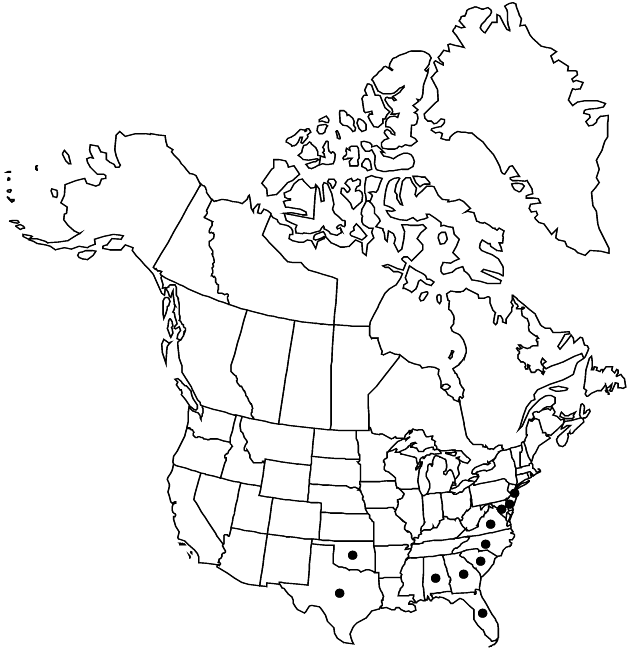Doellingeria sericocarpoides
Bull. Torrey Bot. Club. 25: 620. 1898.
Plants 50–150 cm (short to long-rhizomatous). Stems usually 1, ascending to erect, striate, glabrous proximal to heads. Cauline leaves: mid and distal crowded, blades lanceolate (proximal) to ovate (distal), 30–110 × 15–40 mm, reduced distally, stiff, bases cuneate, margins involute to weakly revolute, finely ciliate, apices acuminate, faces glabrous or sparsely hairy. Heads (8–) 30–130 (–200). Peduncles 1–10 mm, sparsely to moderately canescent; bracts linear-lanceolate to broadly lanceolate. Involucres 3.2–6 mm. Phyllaries in 3–4 series, midveins often swollen, translucent apically, apices broadly rounded, glabrate. Rays 2–7; laminae (6–) 8–12 (–14.5) × 1–3 mm. Disc-florets 4–13 (–20); corollas 4–7 mm, lobes 2–4.2 mm, 60–75% of limbs. Cypselae 1.5–3.7 mm, 6–8-ribbed, sparsely strigose; pappi: outer 0.4–1.1 mm, inner 4–7 mm. 2n = 18.
Phenology: Flowering fall.
Habitat: Bogs, wet thickets and woods, coastal plain
Elevation: 10–200 m
Distribution

Ala., Del., Fla., Ga., Md., N.J., N.C., Okla., S.C., Tex., Va.
Discussion
Doellingeria sericocarpoides is uncommon in eastern Texas and southeastern Oklahoma.
Selected References
None.
Lower Taxa
"[" is not declared as a valid unit of measurement for this property."]" is not declared as a valid unit of measurement for this property.